Fuel cell technology for forklifts
No emissions, fast refueling and safe handling - all these characteristics are combined in one of the most promising energy systems of the future: fuel cell technology. In a fast-paced world, aspects such as space requirements for refueling, operating costs and sustainability are becoming increasingly important. The trend is therefore toward innovative drive systems such as the fuel cell. We have been developing solutions suitable for use here since 2000, so that today 80 percent of our electric vehicles can be ordered with hydrogen drive.
Are you interested in switching to fuel cell technology? Our competent energy consultants will be happy to support you.
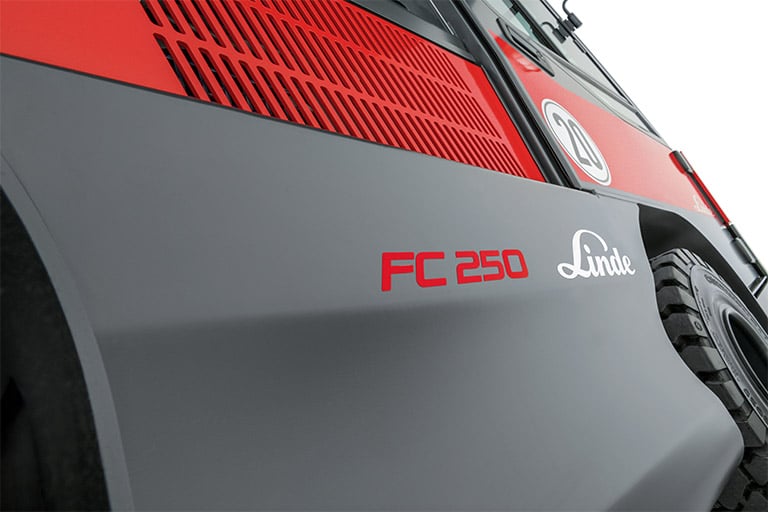
Areas of application
Where are fuel cells used?
The fast refueling as well as the high efficiency make hydrogen-powered trucks perfect for multi-shift operation in production environments or intensive logistics services.
As a clean alternative to lead-acid batteries, the technology can also be used even in hygiene-critical industries with strict specifications, such as the food and pharmaceutical industries.
Hydrogen trucks are also used in the automotive and supplier industries because of their high vehicle availability and continuous performance level.
Thanks to the slim charging infrastructure, the technology is also ideally suited for tight spaces.
Sustainable & Environmentally Friendly
Reduction of emissions during operation
Resource-saving technology
Regenerative fuel
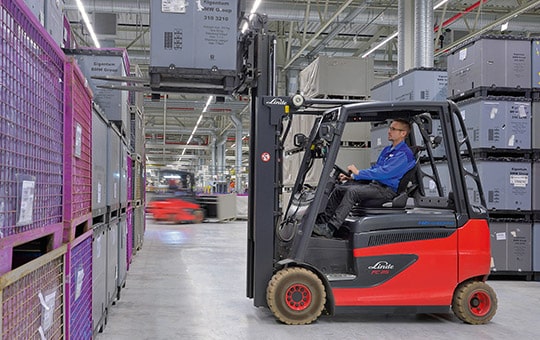
Green, CO2-neutral hydrogen can be obtained sustainably from renewable sources. Since only water or water vapor is produced as a waste product during operation of the forklifts, operational CO2 emissions can also be significantly reduced.
The long service life also has a positive effect on the environment. The technology is also very resource-friendly, as a large proportion of the materials can be recycled.
Fuel technology is thus one of the most environmentally friendly and sustainable types of drive in the intralogistics sector.
Safe & easy handling
Fast refueling in just 3 minutes
Reduction of the workload
Clean handling without acid
Another plus point of fuel cell technology is its uncomplicated, safe and clean handling. Hydrogen is neither toxic nor corrosive or radioactive. In contrast to the lead-acid battery, there is no need to change the battery, so there is no contact with toxic and dangerous acids. The emission-free air also has a positive effect on the health and thus on the performance of the employees.
In addition, a forklift can be easily refueled in just three minutes. The amount of work required by employees to refuel the H2 forklifts is thus reduced to a minimum, and vehicle availability and productivity increase. This is a major advantage, especially in multi-shift operation.
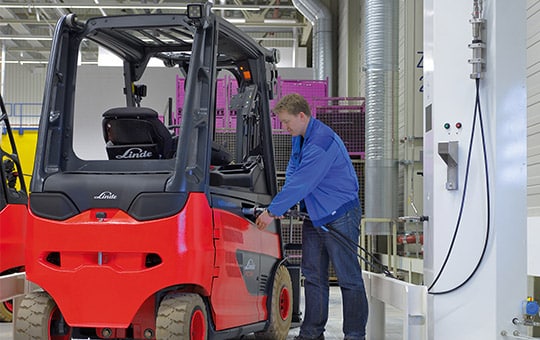
Economical & economical
Low operating and life cycle costs for heavy-duty applications
Future technology with falling prices
Long life
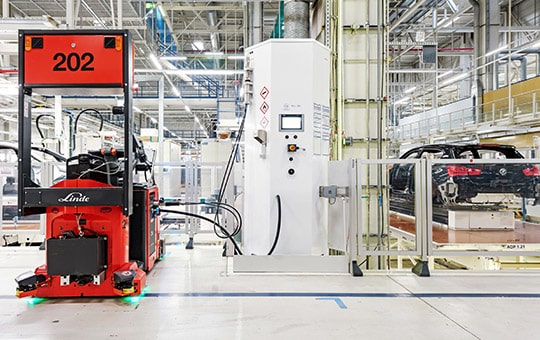
Due to the elimination of time-consuming battery changes and due to the short refueling times, a fleet with hydrogen forklifts has the full performance capacity for the entire shift and service life. Furthermore, battery charging stations, ventilation systems or battery rooms are no longer necessary, as the hydrogen refueling infrastructure can be implemented in a space-saving manner. This means that more usable space and higher vehicle availability are now available for value-adding processes.
The elimination of the battery changing station and the process improvements due to the short refueling times also greatly improve the cost-benefit ratio. Thanks to the long service life of the fuel cells, life cycle costs are also reduced. Furthermore, the additional investment costs can be reduced via government subsidies.
Functionality of fuel cells
In a fuel cell, hydrogen and oxygen react to produce electricity, heat and water. This process is also called "cold combustion".
The heat generated is dissipated by a fan. To be able to cover power peaks, an additional lithium-ion battery is used. This is fed by recuperation from the recirculated braking energy.
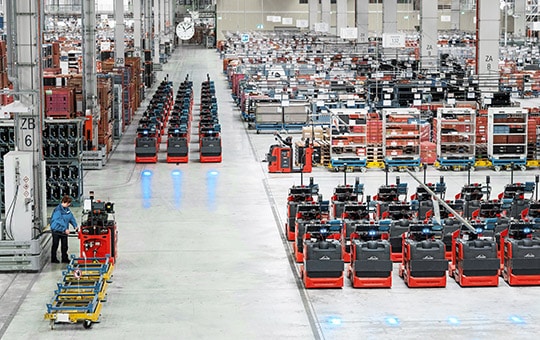
Application requirements for fuel cells
Numerous factors must be considered when implementing hydrogen technology. These include:
- Fleet size: As a rule, an economic business case arises from the use of around 20 vehicles.
- infrastructure (e.g. filling stations, provision and storage of hydrogen): Economical use is usually easy to implement if a hydrogen infrastructure is already in place. If a necessary infrastructure is yet to be created, the efficiency must be adjusted individually.
- Subsidies: Subsidies favor the development of a sustainable, hydrogen-powered fleet.
Frequently asked questions
Which vehicle types are currently available with fuel cell drive?
Around 80% of our current portfolio of electric vehicles can be equipped with fuel cells. These include low-lift trucks, tow tractors, reach trucks as well as forklifts. Simply contact one of our experts for more information.
The price for 1 kg of hydrogen in Germany is currently around €10 (as of July 2020). This depends on the type of hydrogen (color), the type of delivery or the production location.
There are four different types of hydrogen: green, gray, blue and turquoise.
Green:
Green hydrogen is produced by electrolysis of water. For this, 100% electricity from renewable energy sources is used. The production of hydrogen thus takes place completely without the emission of CO2.
Gray:
Hydrogen from fossil fuels, such as natural gas, is referred to as gray hydrogen. Steam reforming transforms the natural gas into hydrogen and CO2 under the influence of heat. The CO2 is then released into the atmosphere, increasing the greenhouse effect.
Blue:
Blue hydrogen also uses fossil fuel. However, the CO2 is stored during the production process. The production of blue hydrogen can therefore be considered CO2-neutral.
Turquoise:
Turquoise hydrogen is produced via the thermal cracking of methane. Instead of CO2, solid carbon is produced in this process. For turquoise hydrogen to be considered CO2-neutral, the heat supply of the high-temperature reactor must be fed from renewable energy sources. Another prerequisite is the permanent bonding of the carbon.
Conversion is not always possible and depends on the vehicle model. However, new vehicles can be equipped with preparation, for example, if the company does not want to switch to fuel cell technology until later. Simply contact our experts for this.
The state is pushing the expansion of fleets powered by hydrogen or fuel cells. For this reason, the German Federal Ministry of Transport and Digital Infrastructure (BMWi) is supporting companies in making the switch as part of the "National Hydrogen and Fuel Cell Technology Innovation Program". Our experts will be happy to inform you about the requirements for funding and support you in preparing your application.

Do you still have questions?
David
Sieverdingbeck
You might also be interested in
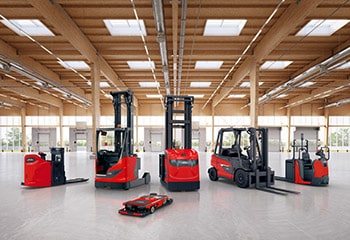
- Whether forklift, pallet truck, telescopic forklift or multi-directional forklift - All equipment for logistics and transport at a glance.
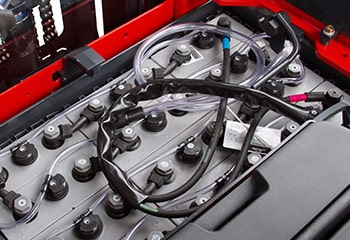
- Proven technology with a good price-performance ratio - that's what lead-acid batteries stand for. The ideal energy storage for forklifts with high energy and cycle applications.
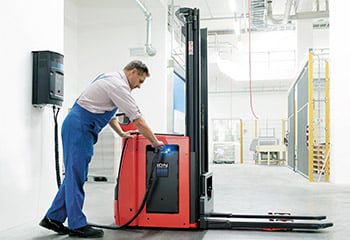
- Environmentally friendly, efficient and safe work with high vehicle availability and cost-effectiveness - even in multi-shift operation? Our innovative lithium-ion batteries make it possible.
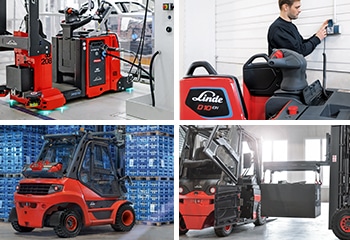
- Whether lead-acid battery, lithium-ion battery, fuel cell, diesel or propellant gas. Our energy experts will help you find the right energy system for your operation.